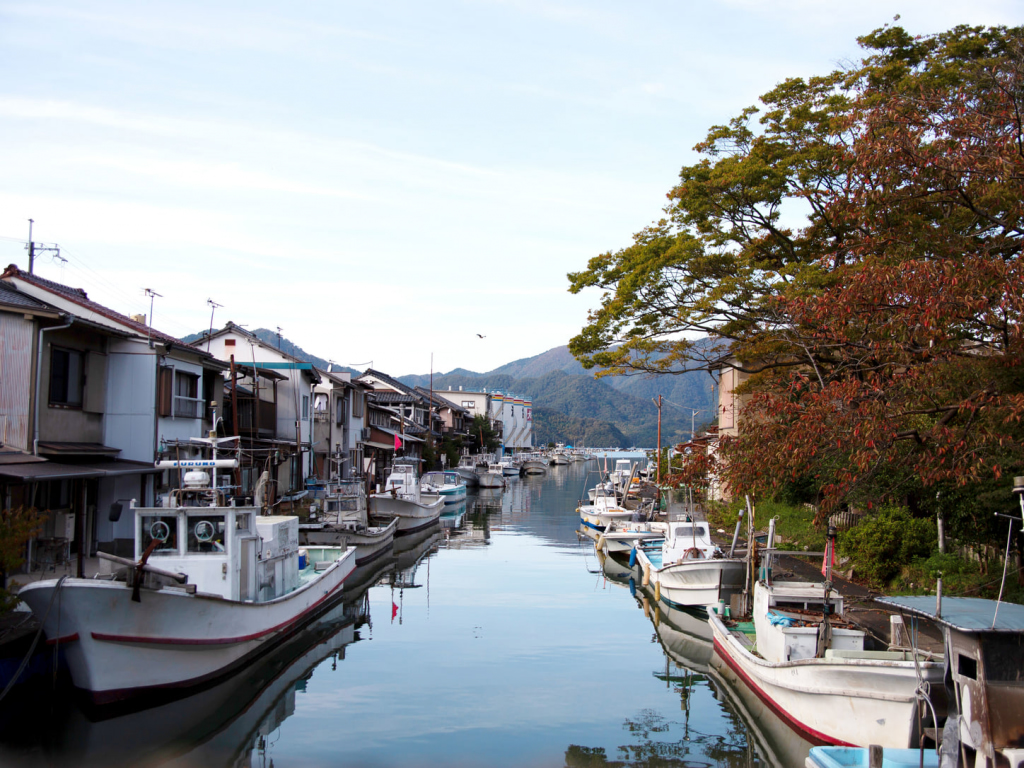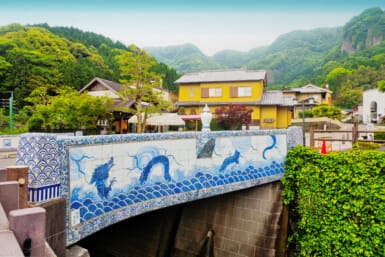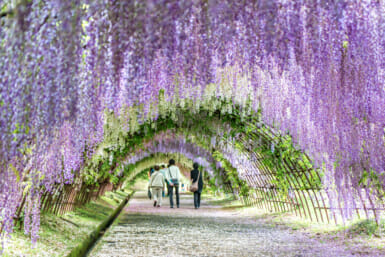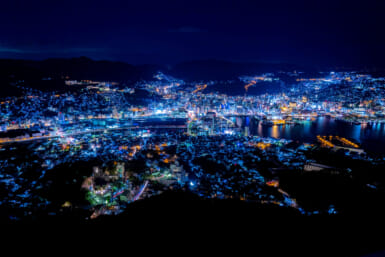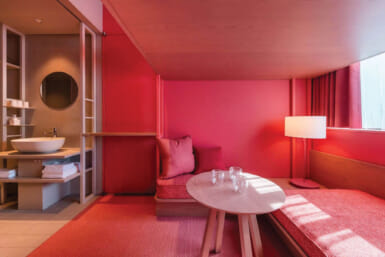The marks of history cut deep in the Tango Peninsula of northern Kyoto Prefecture. Dubbed Kyoto by the Sea, the area’s leading tourist destination is the picturesque geographical oddity Amanohashidate. However, abound with legends and shrines that pre-date Christianity, the surrounding communities birthed some of Japan’s oldest traditions. While silk and washi merchants provided high-grade materials to Kyoto’s nobility, fishermen supplied fresh daily catch. With the influx of Western influence during the Meiji era, the Sea of Japan’s port cities are time capsules of this rapid period of modernization. Set aside smart devices for a few days and let the congenial and refreshingly candid locals provide insight into a land rich in character and harmonious natural beauty.
The Bricks of Maizuru
Two hours north of Kyoto by bus, past ripe persimmon trees, ever-encroaching bamboo groves, wild yellow rapeseed blossoms and a country school with a well-groomed baseball diamond, is Maizuru, a harbor city that prospered under the duress of war. Historically the port provided the easiest access from Kyoto to Hokkaido via the Sea of Japan. From 1901, prior to the onset of the Russo-Japanese War, Maizuru became home to warships and legendary Japanese naval commander Heihachiro Togo, who famously annihilated the Imperial Russian Navy’s Baltic Fleet at the Battle of Tsushima. The naval stronghold became more fortified as World War II drew near, and today Japan’s nearest point to North Korea serves as district headquarters for the Japan Maritime Self-Defense Force.
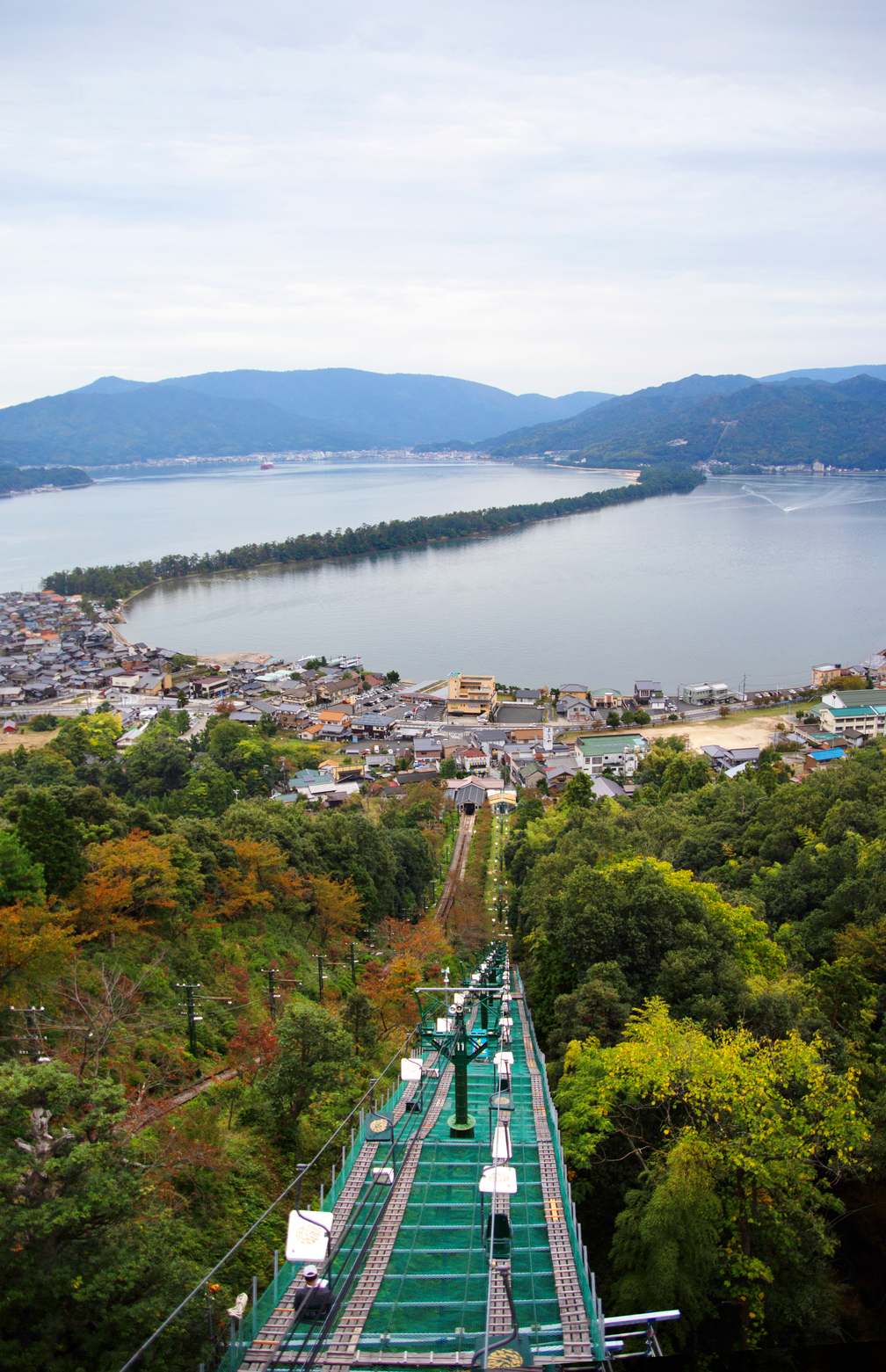
Amanohashidate
The Maizuru Brick Park is a stoic reminder of the rapid militarization that took place during the first half of the 20th century. The 12 brick ammunition warehouses that remain unscathed, fortuitously escaping World War II bombing raids, are representative of the Western influence that took hold in Japan at the turn of the 20th century. In a country where wood was the prevalent building material, the steel-framed buildings, whose arches are something of an architectural marvel, are the most prominent brick structures remaining in Japan, aside from Tokyo Station.
While some of the buildings still store army supplies, the most prominent warehouse – built in 1903 – was transformed into the Maizuru World Brick Museum. The building that once housed torpedoes, depth charges and mines now displays ancient bricks from around the world, as well as the hull of a 5,300-year-old boat discovered in Maizuru Bay. The cavernous building number 5 is now an event space that includes a café and a life-size replica of Admiral Togo. Once completely concealed in black paint to hide from overhead bombers, dark scuff marks can be seen on the red brick, and overhead the ingenious transport system that carried weapons from one end of the warehouse to the other remains in place.
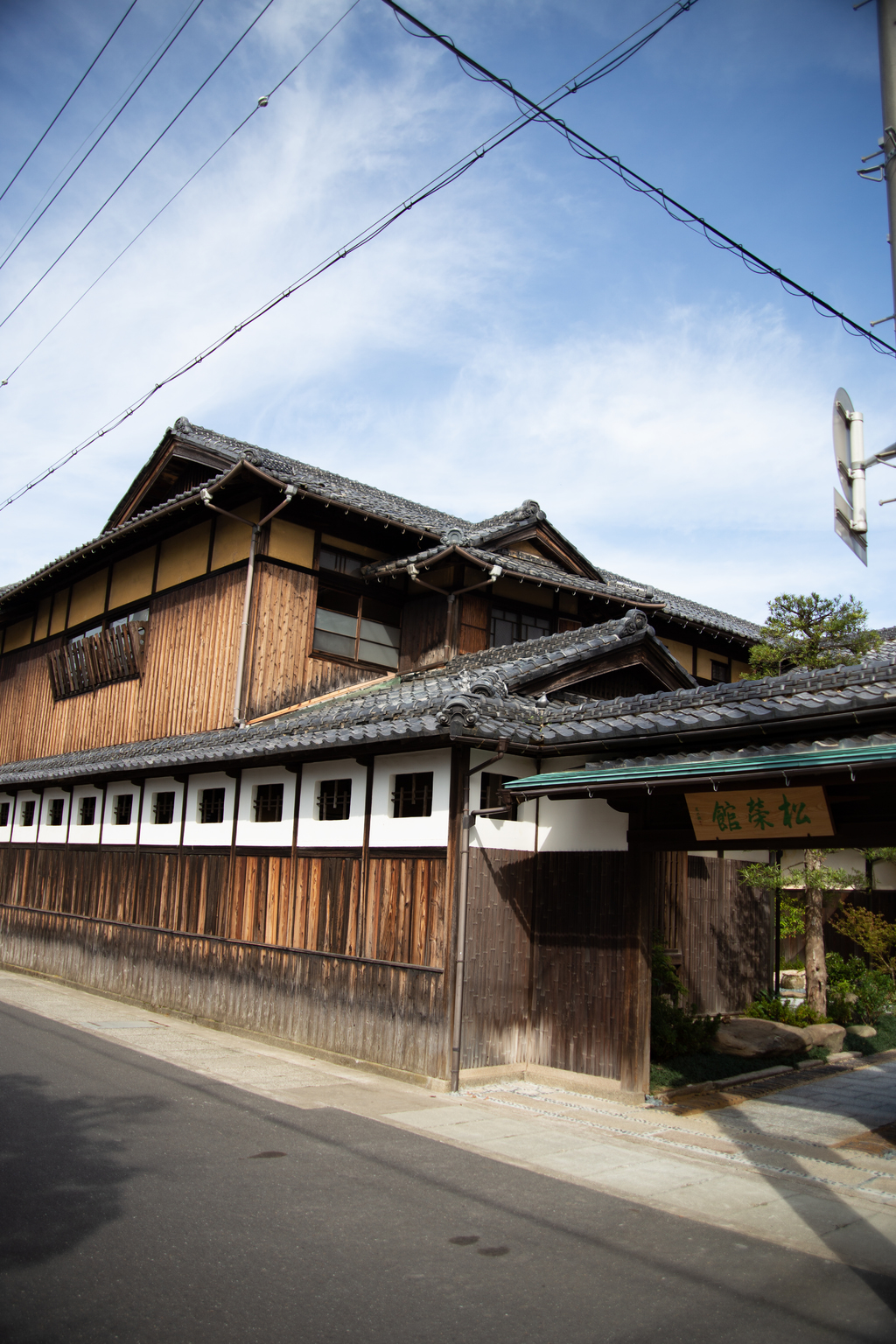
Recently renovated, the nearby Hotel Amabile Maizuru was once the favored overnight stay for naval officers on furlough. While the main building is completely modernized for accommodation, the annex building – the former dining hall – was renovated separately and reopened in fall 2018 as the restaurant Shoueikan, encapsulating the same Meiji era ambience, and menu, enjoyed by officers of old.
Red meat was banned in Japan until the Meiji Emperor opened Japan’s doors to the West in 1868 and ordered his consorts to adopt European customs. Naval officers traveling abroad were the first point of contact and brought back beef recipes favored by British sailors, believed to be the cause of Westerners’ greater physical size. Shoueikan specializes in this cuisine, called yoshoku, imitating recipes that were recorded in a Meiji-era navy recipe book, including curry rice (eaten the same day every week to help sailors keep track of the calendar), cabbage rolls, hamburger steak and a sweetened meat, potato and onion dish called nikujaga, still popular in Japanese households.
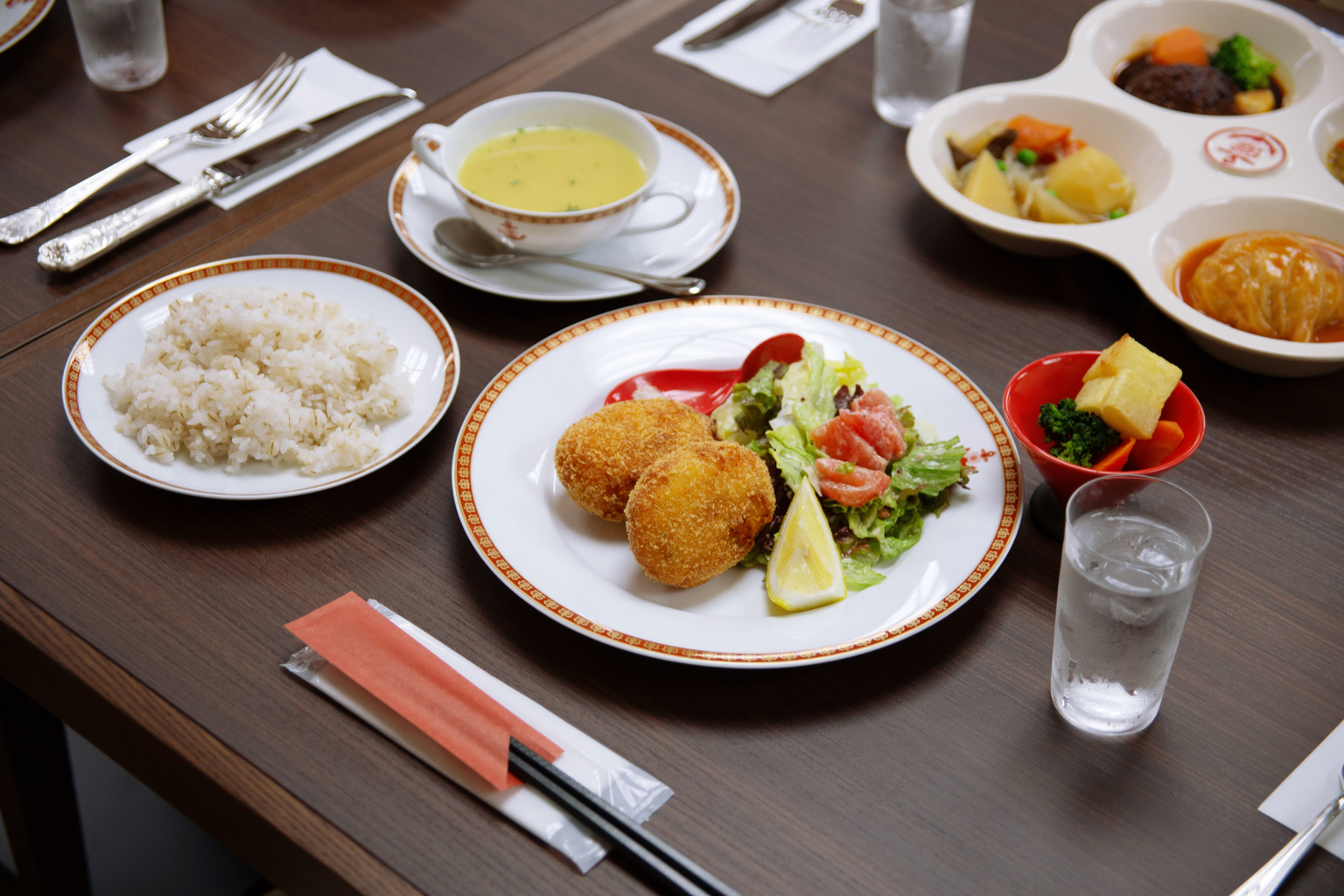
The second-floor tatami rooms, used for private dining, are furnished with antique European chairs and dining tables. Since traditional Japanese homes were not built to accommodate furniture, Meiji-era Japanese buildings were retrofitted to blend the foreign furnishings with the Japanese aesthetic. The restaurant, and the town of Maizuru, are symbolic of the Meiji Restoration, and the government’s immense efforts to integrate European customs and traditions into the Japanese lifestyle.
All Around the Mulberry Bush
As she stands in a mountain stream, crushing mulberry pulp with the heels of her black rubber boots, Horie Sayo cackles and casually tosses a tiny red crab onto the shore. For 50 years the 86-year-old has handcrafted delicate, velvety washi paper in her hometown of Kurotani, following the same techniques and traditions that her forebearers used for some 800 years.
Local legend says members of the Heike clan, one of Japan’s four dominant families during the Heian period (794–1185), absconded to these mountains south of the Sea of Japan following defeat in battle, founding the village of Kurotani, now incorporated in Ayabe city. The Ayabe area has long been famous for its textile manufacturing, and the banished warriors took up washi paper-making to earn a living during lean winter months.
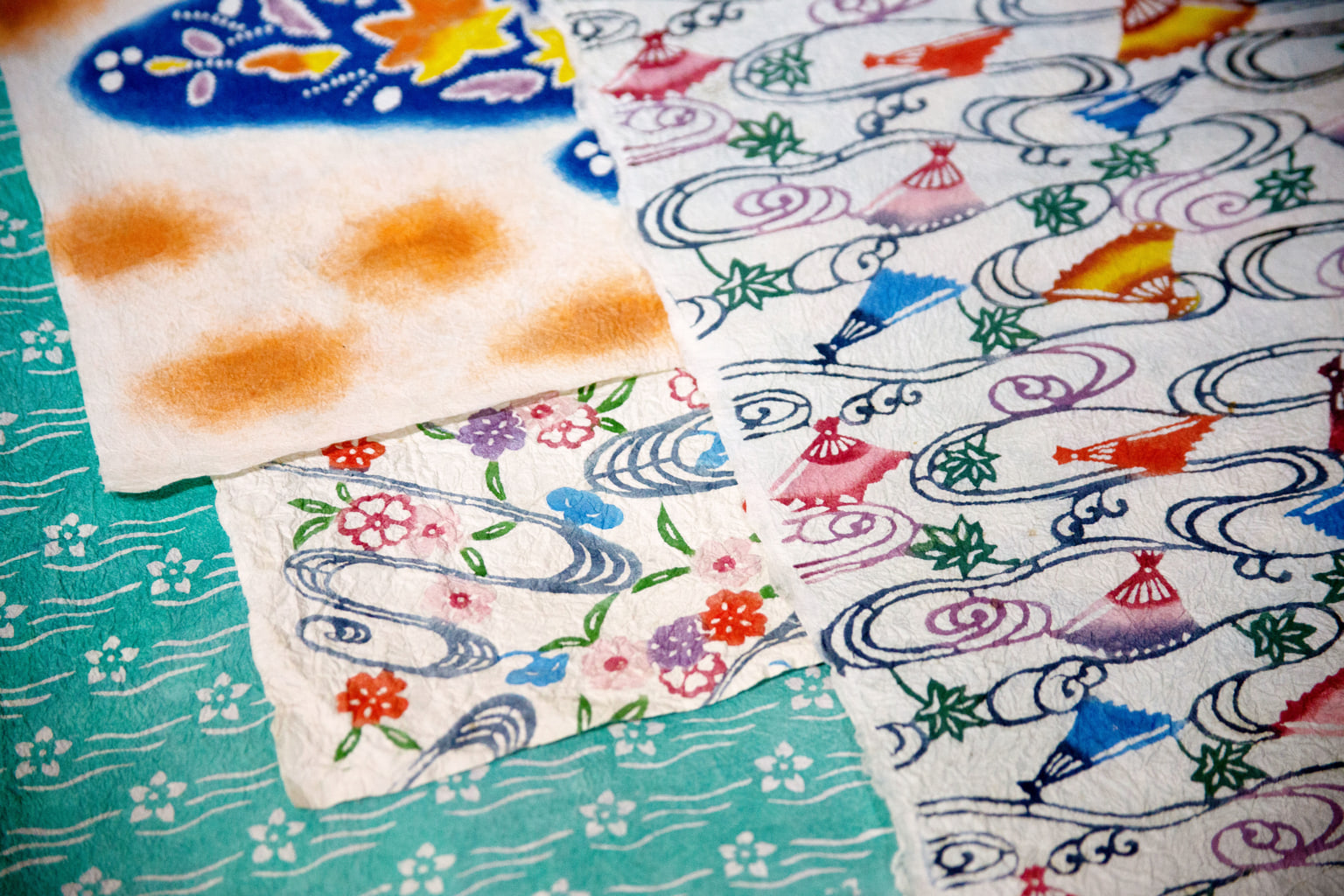
The mulberry bushes lining the Kurotani River produce particularly strong pulp, and Kurotani washi became the paper of choice among Kyoto’s trendsetters of the Edo era. At the height of popularity, 54 Kurotani households produced washi paper. Today that number has dwindled to eight or 10.
Kurotani washi paper is still 100 percent handmade, and its reputation has reached overseas markets. French art restorers visited Kurotani to learn how to use the paper to repair historic artwork, while Columbian artists use the paper to produce work for world-
renowned fashion brands.
Meanwhile, the people making the washi are nearly all elderly grandmothers like Sayo. The mulberry is grown like crops, and harvested every December, with new branches sprouting from the stumps in spring. The cut branches are steamed in an iron cauldron and stored in a wooden barrel. The bark is then stripped, dried and placed in the river to soak overnight.
The next day it is crumpled by foot to soften the fiber. After more processing, the soft, mushy pulp is gathered in wooden square instruments like a pie crust and formed into washi paper. Visitors to Kurotani have the opportunity to make their own washi paper at user-friendly workshops, using the same method as the outcast samurai warriors.
Dock of the Bay
During America’s Prohibition era of the 1920s, New Jersey rum runners built secret garages under their boathouses where motorboats loaded with illegal Canadian whisky docked in the dead of the night. The boathouses of Ine, called funaya, have similar seaside garages, only used for far less illicit purposes.
Located on an inlet at the north end of Tango Peninsula, Kyoto Prefecture’s northernmost point, the seaside village of Ine has escaped the dilapidation and economic blight that plagues many of Japan’s rural aging communities. The village, whose 230 funaya are considered Important Cultural Properties, has become a popular tourist destination, rivaling nearby Amanohashidate, the famous sandbar that serves as a land bridge enclosing a section of Miyazu Bay.
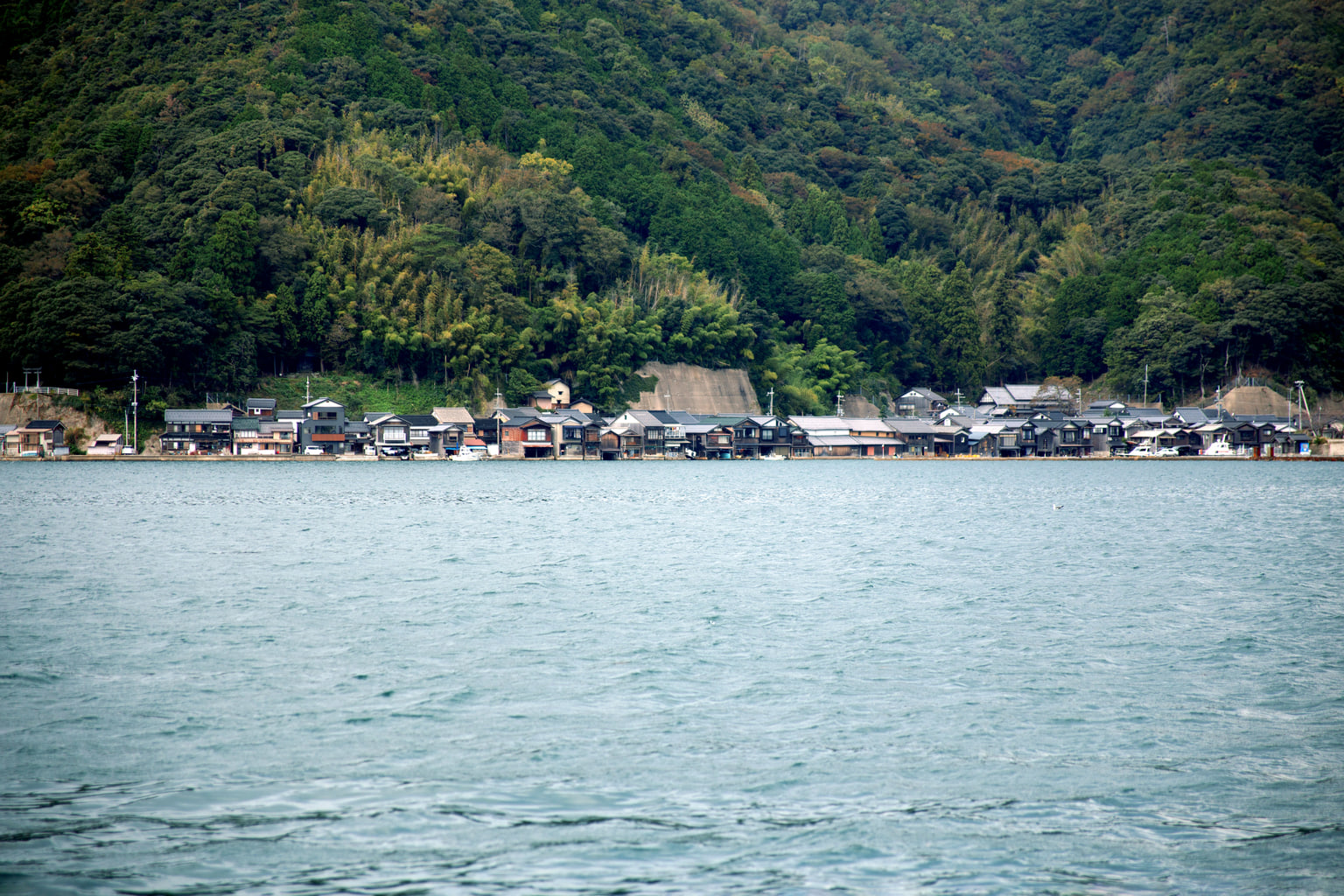
The Fishing Village of Ine
Younger generations are returning to Ine to renovate the family funaya, turning them into inns and cafés. Tourists enjoy the fresh sashimi of locally caught amberjack yellowtail and take boat tours, where they can view the picturesque funaya from the sea, and have seagulls snatch treats directly from outstretched fingertips.
Toshikazu Yamada, 70, inherited his family’s century-old funaya from his parents, and gives 30-minute boat tours. His renovated boat garage is lined with fishing poles, nets, life jackets and photos of Yamada with Japanese celebrities. Yamada’s wife, Katsuko, goes to the end of the boat ramp, where the clear blue waters of the Ine Bay lap calmly at the hull of the Yamadas’ fishing boat, and hauls up an enclosed fishing net baited with vegetable rinds. Two large yellowtail flop inside the net. Fishermen have been using this style of fishing for generations, she says, ensuring they will have sashimi to serve on the dinner table in case their fishing excursions are fruitless.
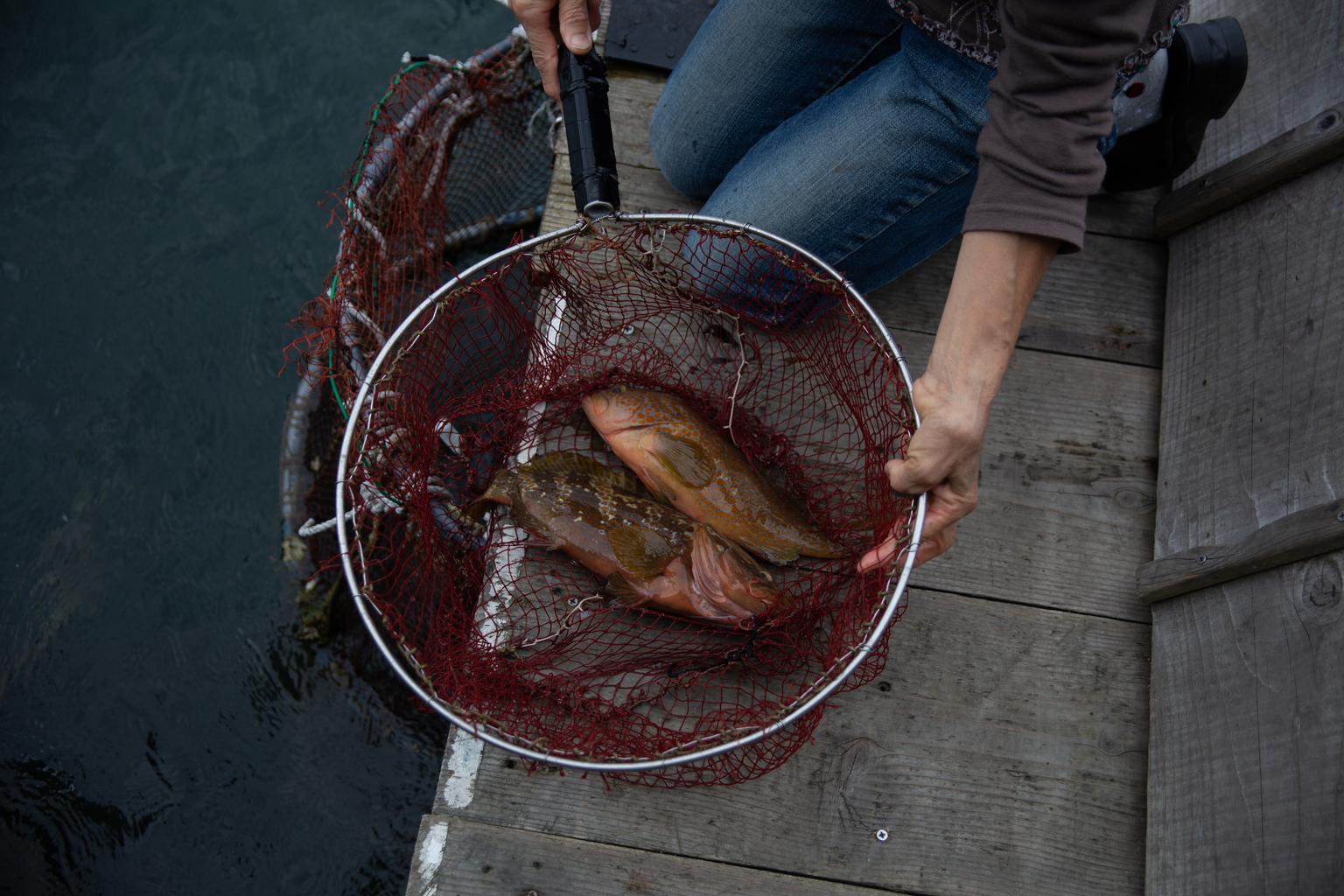
Further down the road, Ine’s Mukai Shuzo Sake Brewery has been distilling sake for nearly 300 years, with head brewer Kuniko Mukai being one of the few female sake masters in Japan. Her Ine Mankai has earned special distinction. Translated as “Ine in full bloom,” this pure rice sake is made from an ancient strain of locally grown red rice, producing a unique spirit that tastes something like cherry-imbued roses.
At the brewery, visitors can sample the Ine Mankai, or the more traditional Kyo no Haru, before continuing their journey amidst the crisp salty air of Kyoto Prefecture’s seaside hideaway.
The Silk Road to Kyotango
Shortly after Kyotango’s Kotohira Shrine was built in 1811 to honor the god protecting sailors and fishermen, local silk producers donated proceeds to build Kishima Shrine inside the existing compound. Two cat statues were erected, making Kishima Shrine the only shrine in Japan protected by cats rather than dogs. Longtime allies of the silk industry, the cats fend off rats who threaten the woven silk fabric, locally called Tango chirimen.
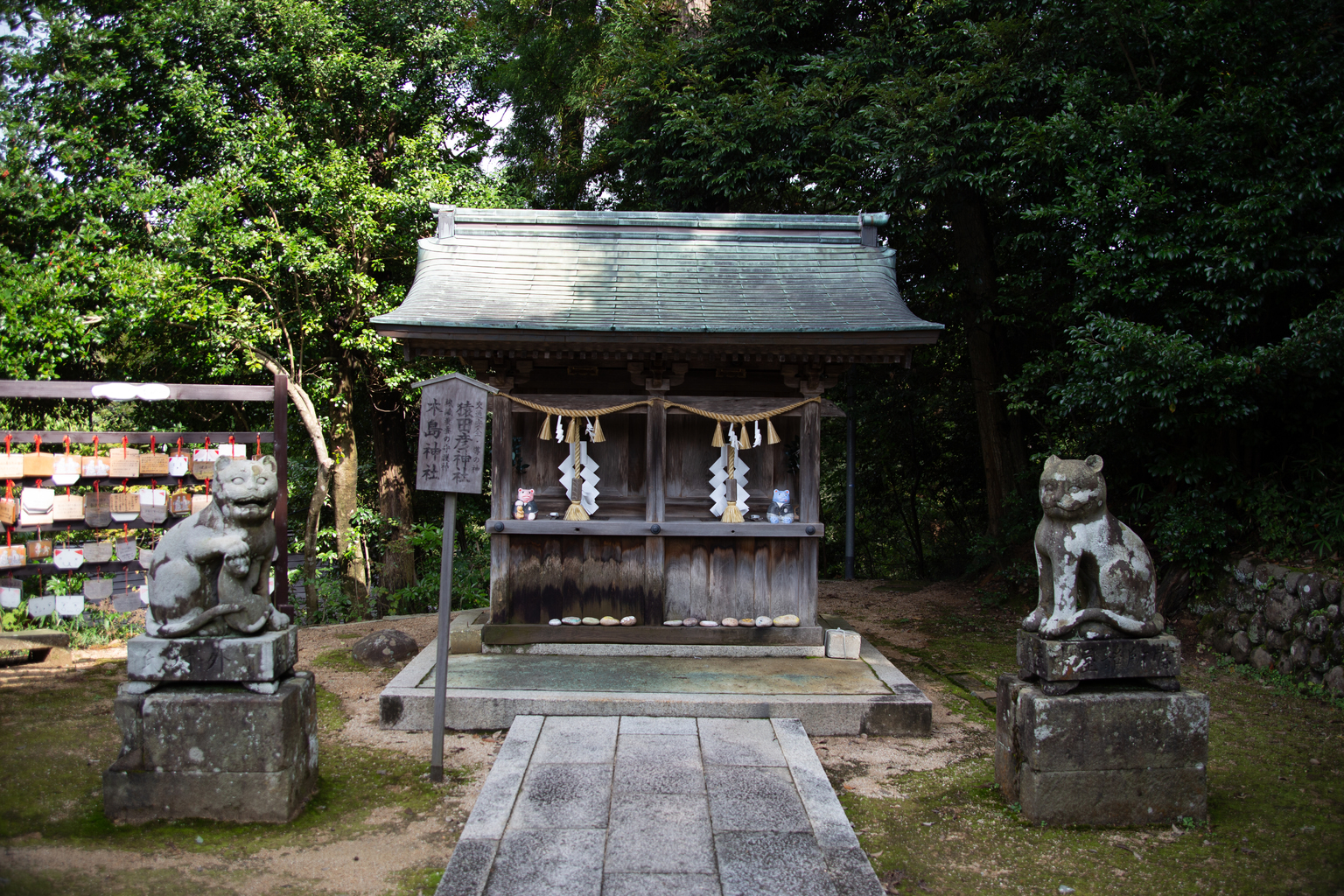
Kishima Shrine
“For almost 200 years these cats have been the guardians of the silk industry, which makes Tango itself,” says Takuji Wakisaka, head priest of Kotohira Shrine. “It is rare to have such a big shrine in such a small town, but it is all because of Tango chirimen.”
Silk fabrics have been produced in the Tango area for more than 1,300 years due to the rainy, humid climate, as dryness is detrimental to silk. The chirimen technique, which creates a coarse texture called silk crepe, arrived in Tango from China in the 18th century. The technique took root in the Tango region, which still produces two-thirds of the silk in Japan, mostly used for high-end kimonos and obi belts.
Kyotango silk house Tamiya Raden, which invented the modern technique of inlaying abalone seashells in its textiles, produced an obi said to be a favorite of Empress Michiko, and fabrics displayed on Paris runways in fashions created by the world’s top designers.
The devastating 1927 Kita Tango earthquake destroyed most of the buildings in the region, throwing a crippling blow to the Tango chirimen industry. The town of Yosano, including a section of the chirimen road – the main thoroughfare for silk merchants carrying their wares to Kyoto – escaped the destruction and remains intact. Visitors can experience Tango chirimen’s heyday at Yosano, once an economic hub, and tour the grand former residence of the Bitou family, which had 12 generations of Tango chirimen wholesale dealers.
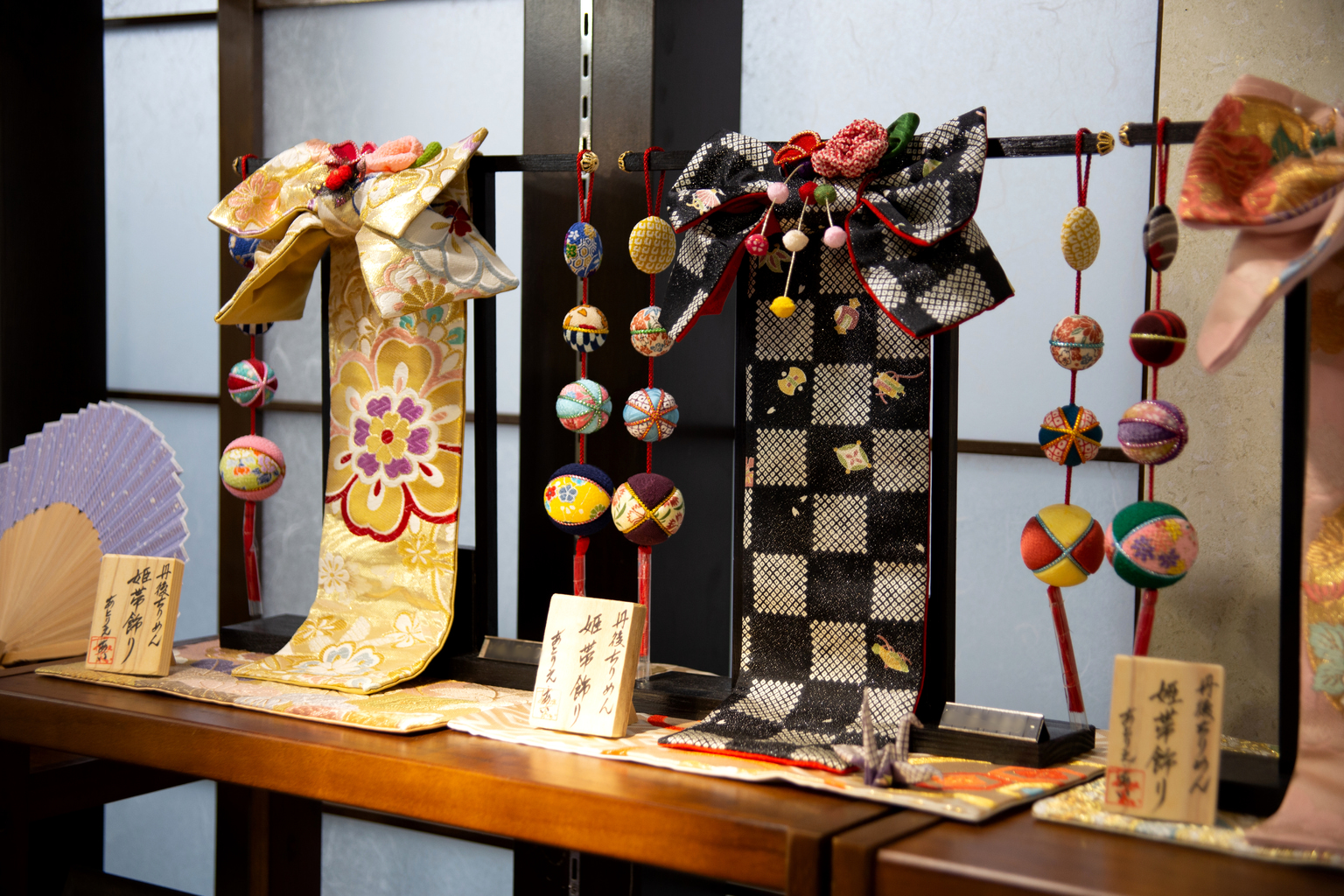
A visit to the Tayuh Textile Co. factory in Amino shows a modern Tango chirimen producer in action. Rows and rows of mechanized looms whir as hundreds of silk threads crisscross in geometrical patterns, threading through eyeholes and pulling together tight, feeding out intricately designed white fabric.
Third-generation factory owner Hayato Tamoi says prior to 1970 there were 10,000 Tango chirimen factories. That number is now 780.
“If we don’t have these factories, they won’t have kimono for ceremonies or kabuki, important elements of Japanese culture,” says Tamoi. “It’s important to maintain this tradition in Tango, and we take pride in maintaining Japanese culture.”
Learn more at www.uminokyoto.jp
Photographs by Robert Kirsch
Sponsored Post

